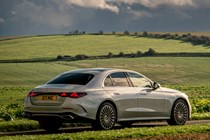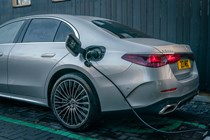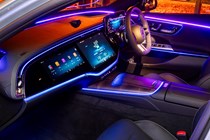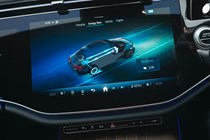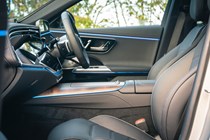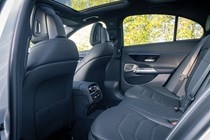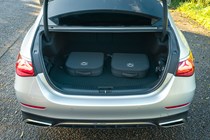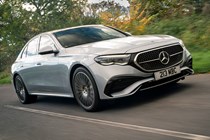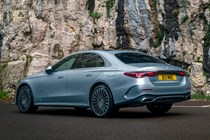
Mercedes-Benz E-Class engines, drive and performance

- Four or six cylinders
- Petrol and diesel plug-in hybrids
- Base E 200 best avoided
Petrol engines
The E200 is the entry-point engine. It’s powered by a 204hp 2.0-litre turbo petrol unit, but it feels and sounds very rough in our encounters so far, and is rather overwhelmed by the saloon’s 1,823kg kerbweight. It’s not outright slow – 0-62mph takes a perfectly respectable 7.5 seconds – but you have to thrash it for it to feel that brisk. The same criticisms could be levelled at the BMW 520i, though.
Like every other non-plug-in E-Class, the 200 is a mild hybrid that gets a 23hp boost from a small electric system that aims to improve efficiency rather than move the car on its own.
Diesel engines
Only a few short years ago the E220d would have been the default choice here. This 197hp 2.0-litre four-cylinder diesel has impressed in other Mercedes models and makes a great deal of sense here. It produces its power lower down in the rev range than the petrol and should make for more relaxed progress, even if it’s 0.1 seconds slower from 0-62mph.
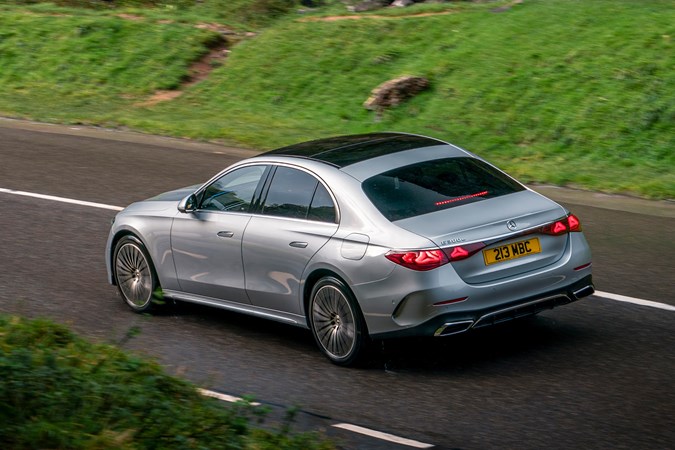
The most expensive engine choice for non-AMG E-Classes is the 3.0-litre six-cylinder, 367hp E450d. We’ve not experienced it in the E-Class yet, but elsewhere its proved very smooth and fast. Four-wheel drive helps it catapult from 0-62mph in 4.8 seconds and it feels effortlessly muscular.
Plug-in hybrids
Unusually, there’s a choice of two plug-in hybrid models, three if you include the Mercedes-AMG E53 that gets its own review.
While based around the same 2.0-litre turbo petrol engine, the E300e is much more pleasant than the E200 thanks to its 129hp electric motor. This gives the plug-in hybrid a combined system output of 313hp, delivering stronger and smoother acceleration and an all-electric range of up to 70 miles. But there are other reasons we like this model best, as we’ll explain in the driving section.
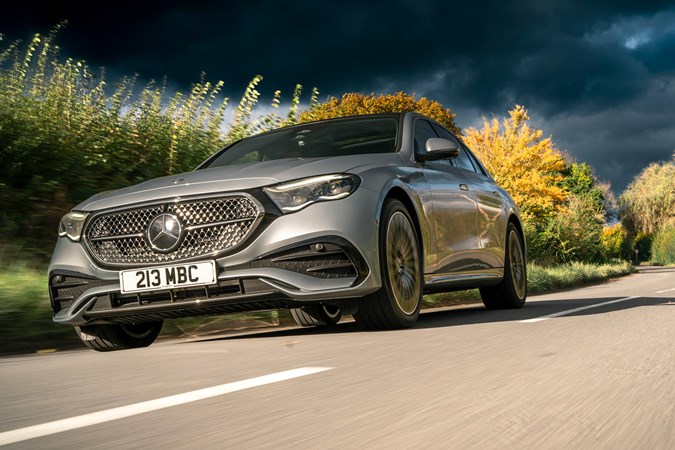
Unusually, you can also get a diesel plug-in hybrid called the E300de. It’s a bit pricier and does two fewer miles on electric, but should offer more impressive economy with a flat battery than the E300e. We’ll come back to that point in the Ownership Costs section of this review.
Check out our Mercedes E-Class specs page for full performance and efficiency details
What’s it like to drive?
- A softer option than the 5 Series
- Four-wheel drive only with six-cylinder models
- We recommend the Refinement Pack
We’ve so far tried the E200 and the E300e in the UK. As a plug-in hybrid, the E300e is more powerful but also significantly heavier, weighing nearly 400kg more. Crucially, it avoids the 15mm lower suspension fitted as standard to the E200 and E220d.
This together with the additional weight delivers significantly better ride comfort than the E200 we sampled, without putting much of a dent in the E-Class’s dynamic agility. This gives the E300e a much more pleasant driving experience.
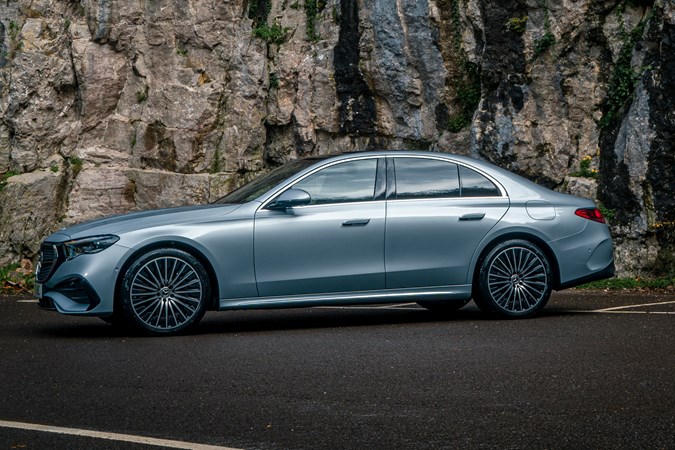
That’s still not to say it’s an especially good one. Body control is still somewhat wallowy, no matter which mode you select from the variable damping system. Rather, it reflects just how poorly set-up the E200 feels for this country.
Despite the 15mm reduction in ride height, which should lower the centre of gravity and reduce body roll in the corners, the E200 somehow exacerbates the waft of the E300e into loose, disconnected floatiness while also punctuating it with dreadfully abrupt responses to poor surfaces. It is the worst of both worlds as a result.
It’s not as if any of this gets the E-Class close to rivals such as the BMW 5 Series in terms of driving enjoyment, either. There is a solution, though. The Refinement Package adds air suspension and rear-wheel steering, and is available on Premium trims and up. Pick the E450d and it’s standard.
We’ve sampled it abroad and found it to give a far more comfortable ride, with the option of stiffening things up if you want to hustle through some corners. The rear steer also shrinks the turning circle and gives a more agile feel in the bends. It’s not a cheap option, but it does bring a marked improvement to how this car rides and handles.





